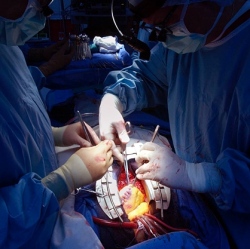
Just as the Olympic Games are kicking off in London, one boy from the UK is pulling ahead in his race to live a normal, healthy life. Two years after becoming the first child to receive a trachea transplant coated with his own stem cells, 13-year-old Ciaran Finn-Lynch is doing so well that he has finally returned to school.
Ciaran was born with congenital tracheal stenosis, a condition in which a portion of the trachea is narrowed and causes breathing difficulties. Doctors performed an emergency surgery to reconstruct his airways when he was just six days old. Until the age of 11, Ciaran had been treated with a series of metal stints to widen his trachea. But two years ago a stint caused major bleeding, and doctors sought a new option.
Stem cell-treated tracheal implants are still at the cutting edge of medicine. The first person to receive one did so only in 2008. A donor trachea is taken from a cadaver and has its cells stripped. The decellularized trachea serves as a collagen scaffold for the pluripotent stem cells that, in Ciaran’s case, were taken from his bone marrow. Grafts from the original trachea were treated with cytokines and other proteins to induce the stem cells into becoming trachea cells. Replacing the donor trachea’s cells with the patient’s own allows the body to recognize it as its own and not reject it, minimizing the need for immunosuppressive drugs.
But what made Ciaran’s surgery different from the one in 2008 was the fact that the stem cells were added only after the trachea had been implanted. This kind of inside-the-body growth is a big improvement over first growing the cells in the lab. As Martin Birchall, professor of laryngology at the University College of London Ear Institute and part of the transplant team, said in a press release, “We need more research on stem cells grown deliberately inside the body, rather than grown first in a laboratory over a long time. This research should help to convert one-off successes such as this into more widely available clinical treatments for thousands of children with severe tracheal problems worldwide.”
